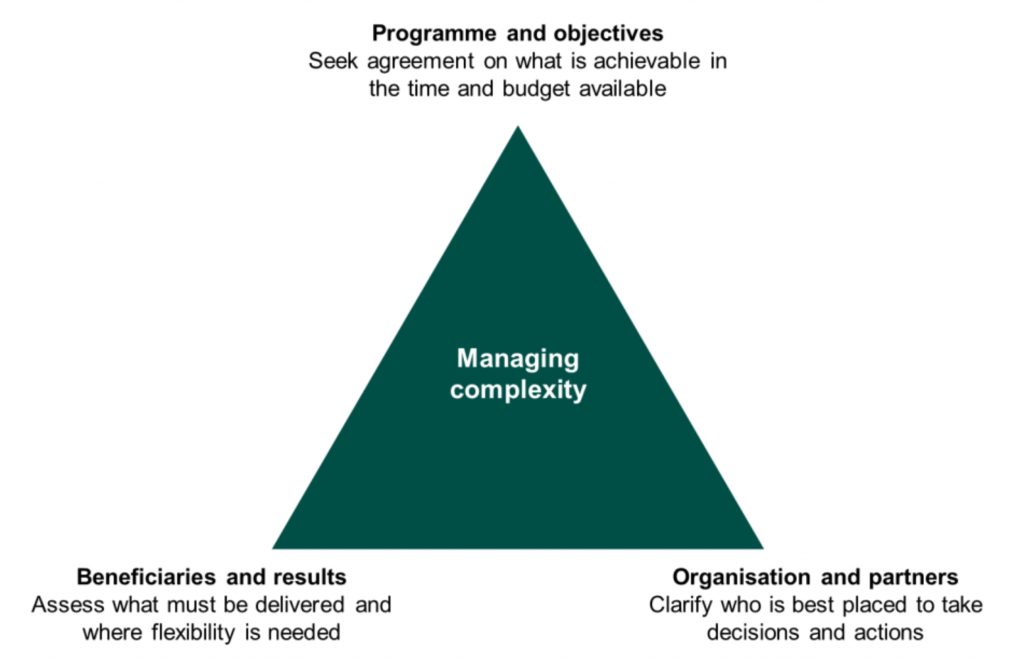
Managing in the face of complexity (part 2.1): Identifying the nature, level and challenges of complexity
This article is part 2.1 of a series of articles featuring the ODI Working Paper A guide to managing in the face of complexity.
How can we determine whether an intervention will face complex problems and, therefore, what is the most suitable management approach? There are various ways to define ‘complexity’ in economic, social and political development. We use a problem-focused definition, grouping the characteristics of complexity according to the type of challenges they pose for the design and implementation of development interventions. See Box 1 for an explanation of the choice of definition.
In this section, we describe three types of challenge:
- The level of uncertainty involved [part 2.2]
- The extent of agreement about project goals or ways to achieve them [part 2.3]
- The extent to which knowledge and capacities are distributed [part 2.4].
We suggest ways in which the reader can decide to what degree they face each challenge of complexity, and outline the implications for management.
It is important to note that situations will hardly ever be complex in their entirety, with all three types of challenge being clearly present. One needs to focus on the combination and respective importance of the three challenges, which have equal status and can be addressed by the reader in any order. It may be that the reader should aim for a ‘fit’ between the three elements, i.e. ensuring they are based on similar principles and understandings; Korten1 (1980) argued that there needs to be appropriate fit between programme (comparable to our discussion of goals), organisation (capacities), and beneficiaries (change pathways). This is illustrated in Figure 1 below.

Next part (part 2.2): Task 1: Assess the level of uncertainty.
See also these related series:
- Exploring the science of complexity
- Planning and strategy development in the face of complexity
- Taking responsibility for complexity.
Article source: Hummelbrunner, R. and Jones, H. (2013). A guide to managing in the face of complexity. London: ODI. (https://www.odi.org/sites/odi.org.uk/files/odi-assets/publications-opinion-files/8662.pdf). Republished under CC BY-NC-ND 4.0 in accordance with the Terms and conditions of the ODI website.
Header image source: pxhere, Public Domain.
Reference:
- Korten, D. C. (1980). Community organization and rural development: A learning process approach. Public administration review, 480-511. ↩






